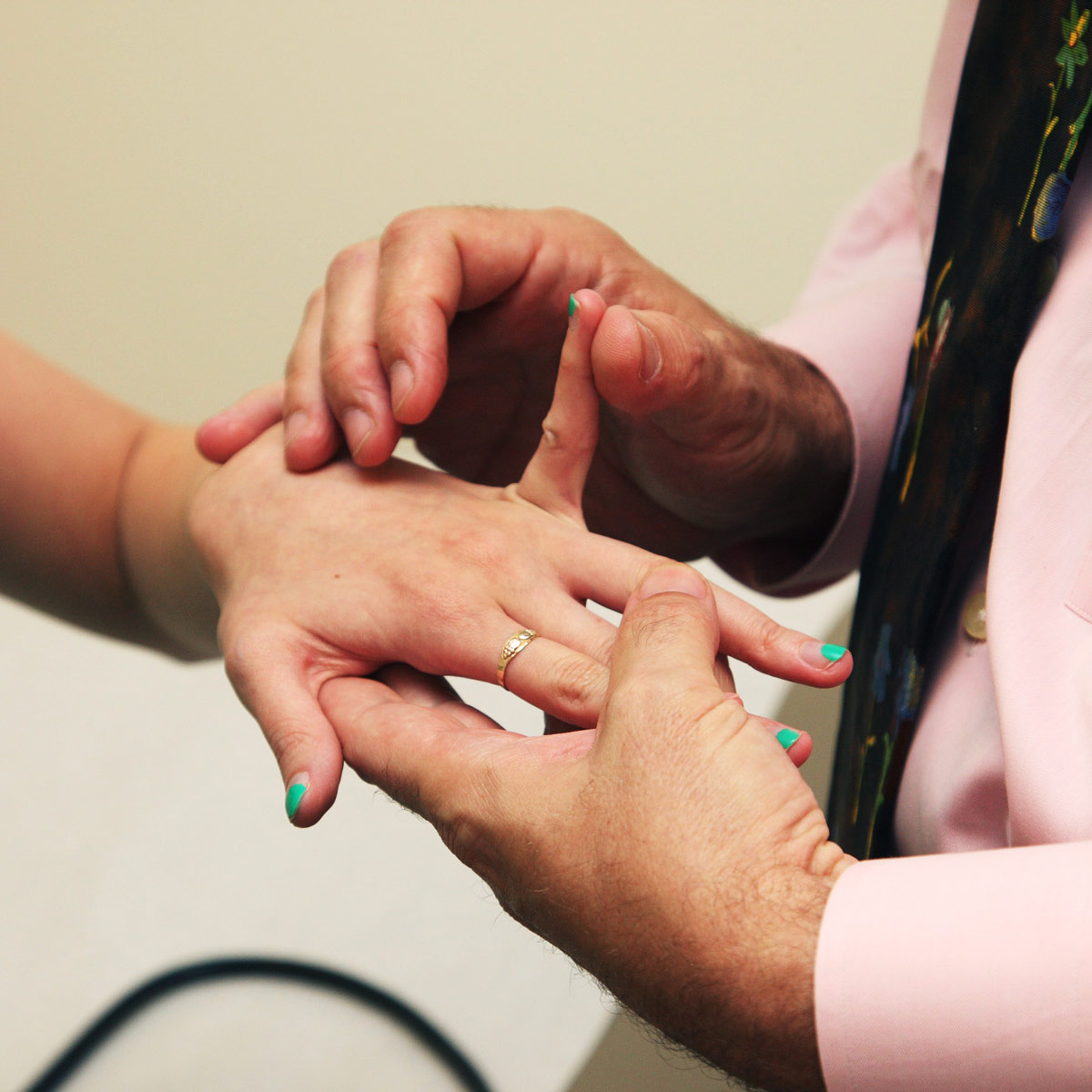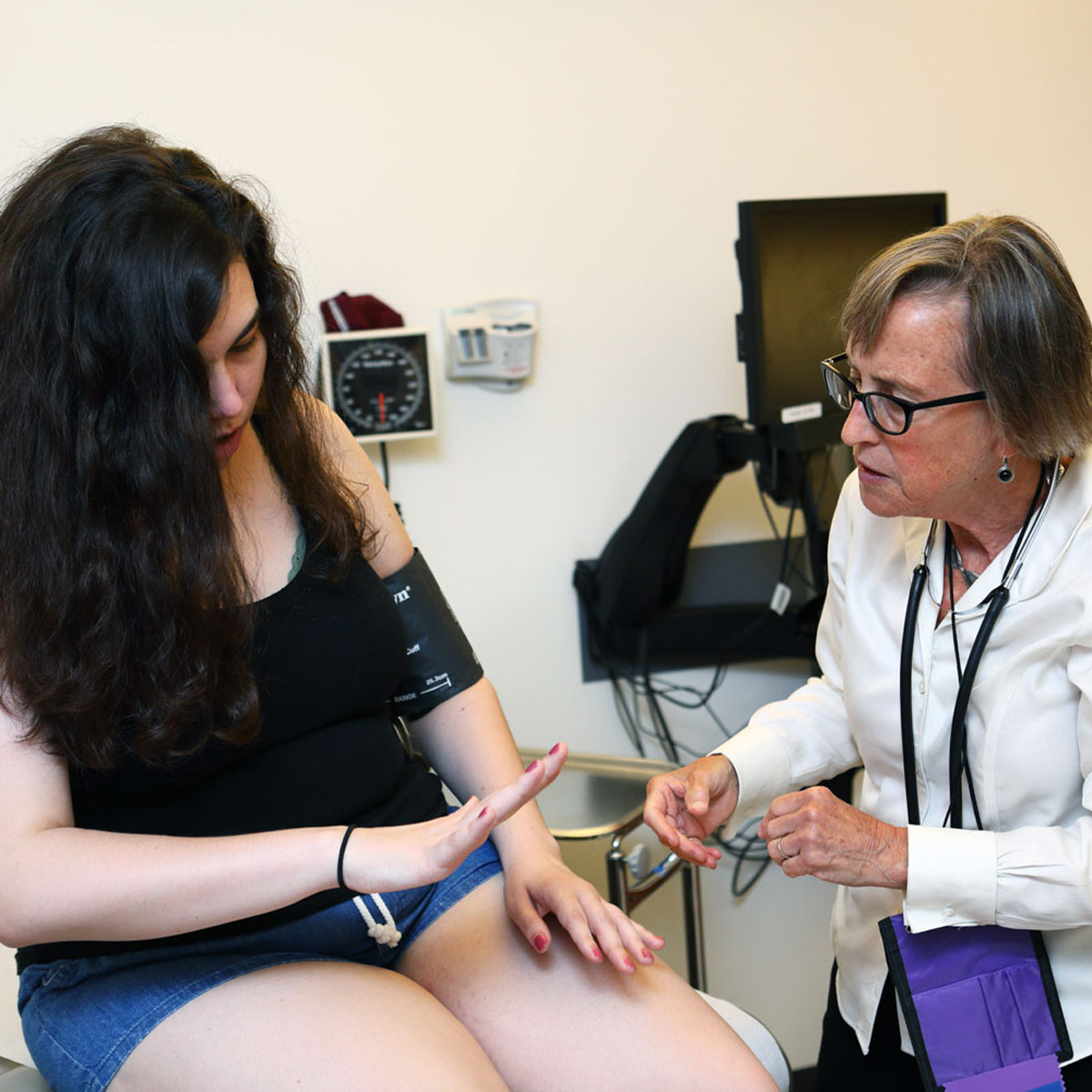Ehlers-Danlos syndrome is a diverse connective tissue condition that has thirteen different subtypes. This group of genetic connective tissue conditions is commonly characterized by unstable, hypermobile joints, loose, “stretchy” skin, and fragile tissues. However, some subtypes, such as Vascular Ehlers-Danlos and Kyphoscoliotic Ehlers-Danlos, are prone to life-threatening arterial dissections and ruptures.
The genetic mutations for all forms of Ehlers-Danlos syndrome are known except for hypermobile Ehlers-Danlos syndrome. It is very important that people with any form of Ehlers-Danlos syndrome are diagnosed early so they can begin the right treatments to prevent serious complications.
What are the Different Types of Ehlers-Danlos Syndromes and What are the Key Features?
The 13 types of Ehlers-Danlos syndromes have a significant overlap in many features. Characteristics can range from mild symptoms, such as loose or hypermobile joints, to severe symptoms, such as pain, functional bowel disorders, incisional hernias, and arterial dissections and ruptures. For the key details of all the subtypes, please visit the Genetic and Rare Diseases Informational Center.
Types of EDS:
-
Hypermobile EDS
Hypermobile EDS is characterized primarily by joint hypermobility affecting both large and small joints, which may lead to recurrent joint dislocations and subluxations (partial dislocation). In general, people with this type have soft, smooth and velvety skin with easy bruising and chronic pain of the muscles and/or bones.
-
Classical EDS
Classical EDS is associated with extremely elastic (stretchy), smooth skin that is fragile and bruises easily; wide, atrophic scars (flat or depressed scars); and joint hypermobility. Hypotonia and delayed motor development may occur.
-
Vascular EDS
Vascular EDS is characterized by thin, translucent skin that is extremely fragile and bruises easily. Arteries and certain organs such as the intestines and uterus are also fragile and prone to rupture. People with this type typically have short stature; thin scalp hair; and characteristic facial features including large eyes, a thin nose, and lobeless ears. Other common features include tendon and/or muscle rupture; acrogeria (premature aging of the skin of the hands and feet); pneumothorax (collapse of a lung).
-
Kyphoscoliosis EDS
Kyphoscoliosis EDS is associated with severe hypotonia at birth, delayed motor development, progressive scoliosis (present from birth).
-
Arthrochalasia EDS
Arthrochalasia EDS is characterized by severe joint hypermobility and congenital hip dislocation . Other common features include fragile, elastic skin with easy bruising; hypotonia; kyphoscoliosis and mild osteopenia.
-
Dermatosparaxis EDS
Dermatosparaxis EDS is associated with extremely fragile skin leading to severe bruising and scarring; saggy, redundant skin, especially on the face; and hernias.
-
Brittle Cornea Syndrome (BCS)
Brittle Cornea Syndrome (BCS) characterized by thin cornea, early onset progressive keratoglobus; and blue sclerae.
-
Classical-like EDS (clEDS)
Classical-like EDS (clEDS) characterized by skin hyperextensibility with velvety skin texture and absence of atrophic scarring, generalized joint hypermobility (GJH) with or without recurrent dislocations (most often shoulder and ankle), and easily bruised skin or spontaneous ecchymoses (discolorations of the skin resulting from bleeding underneath).
-
Spondylodysplastic EDS (spEDS)
Spondylodysplastic EDS (spEDS) characterized by short stature (progressive in childhood), muscle hypotonia (ranging from severe congenital, to mild later-onset), and bowing of limbs.
-
Musculocontractural EDS (mcEDS)
Musculocontractural EDS (mcEDS) characterized by congenital multiple contractures, clubfoot, craniofacial features, and skin features such as skin hyperextensibility, easy bruisability, and skin fragility with atrophic scars.
-
Myopathic EDS (mEDS)
Myopathic EDS (mEDS) is characterized by congenital muscle hypotonia, and/or muscle atrophy, that improves with age, joint contractures of the knee, hip and elbows and hypermobility of the ankles, wrists, feet and hands).
-
Periodontal EDS (pEDS)
Periodontal EDS (pEDS) characterized by severe and intractable early onset gum disease of early onset.
-
Cardiac-valvular EDS (cvEDS)
Cardiac-valvular EDS (cvEDS) characterized by severe progressive cardiac-valvular problems (aortic valve, mitral valve), skin problems (hyperextensibility, atrophic scars, thin skin, easy bruising) and joint hypermobility.
To learn more about Hypermobile Ehlers-Danlos syndrome and its diagnosis and treatment, download:
You may contact our Help and Resource Center with questions anytime at marfan.org/ask.

What Causes the Ehlers-Danlos Syndromes?
Like Marfan syndrome, all the Ehlers-Danlos syndrome are caused by a defect in the body’s connective tissue. The genetic mutations responsible for the 12 of the 13 forms of Ehlers-Danlos syndromes are due to defects in proteins called collagens or other related proteins. Mutations in these genes usually change the structure, production, and/or processing of collagen, or proteins that interact with collagen. Collagen provides structure and strength to connective tissues throughout the body. A defect in collagen can weaken connective tissues in the skin, bones, blood vessels, and organs, resulting in the signs and symptoms of EDS.

Getting Diagnosed with Ehlers-Danlos Syndrome
People with Ehlers-Danlos features need to see a doctor who knows about this and other connective tissue condition for an accurate diagnosis; often this will be a medical geneticist. It is very important that people with any type of Ehlers-Danlos syndrome are diagnosed early so they can begin the right treatments to prevent serious complications.
How are Ehlers-Danlos Syndromes Managed?
Treatment is based on a person’s specific set of symptoms. Options may include:
- Physical therapy/rehabilitation
- Assistive devices, such as braces to improve joint stability; wheelchair or scooter to take stress off lower-extremity joints; and suitable mattress to improve sleep quality
- Pain medication to help relieve joint pain
- Surgical procedures should be considered with caution
- Arterial imaging
Additional Resources Related to Ehlers-Danlos Syndrome
Emergency Preparedness
Following your doctor’s recommendations for medication, monitoring, and physical activity gives you the best chance of avoiding a serious complication of Ehlers-Danlos syndrome. Still, there are no guarantees. That’s why it’s important for you to learn about the medical problems that could arise and require immediate medical treatment.

